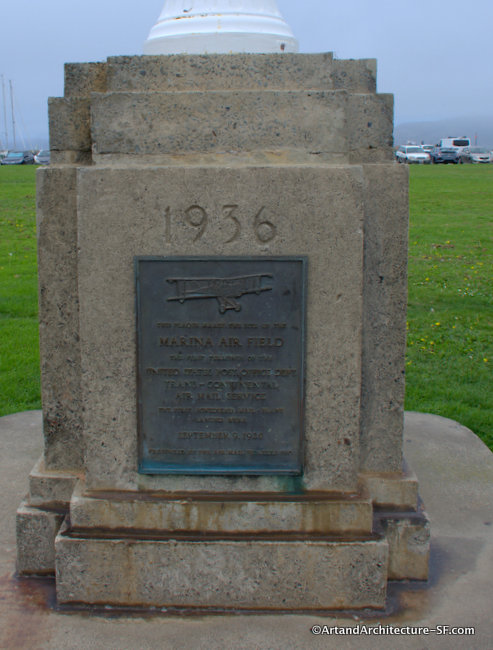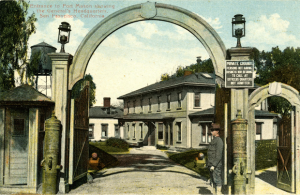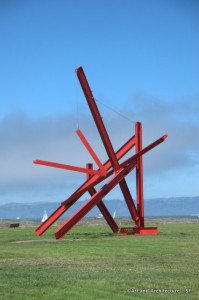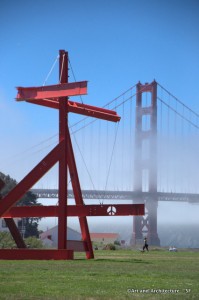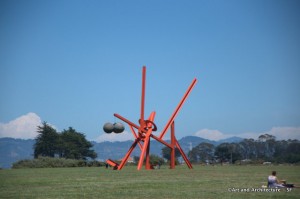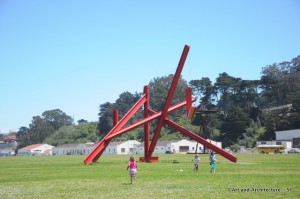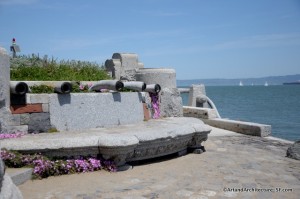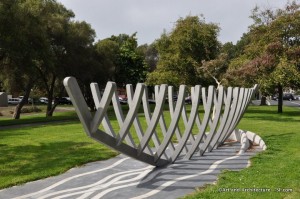Marina District
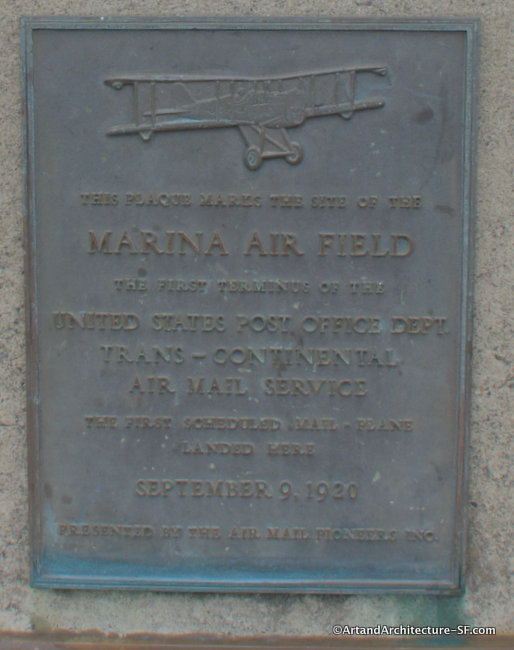
This plaque marks the site of the MARINA AIR FIELD. The First terminus of the UNITED STATES POST OFFICE DEPT. TRANS-CONTINENTAL AIRMAIL SERVICE The first scheduled mail-plane landed her September 9, 1920. Presented by the Air Mail Pioneers Inc.
This airfield was originally part of the 1915 Pan Pacific International Exhibition (PPIE). During the 266 days the Exposition ran the field was used several times a day.
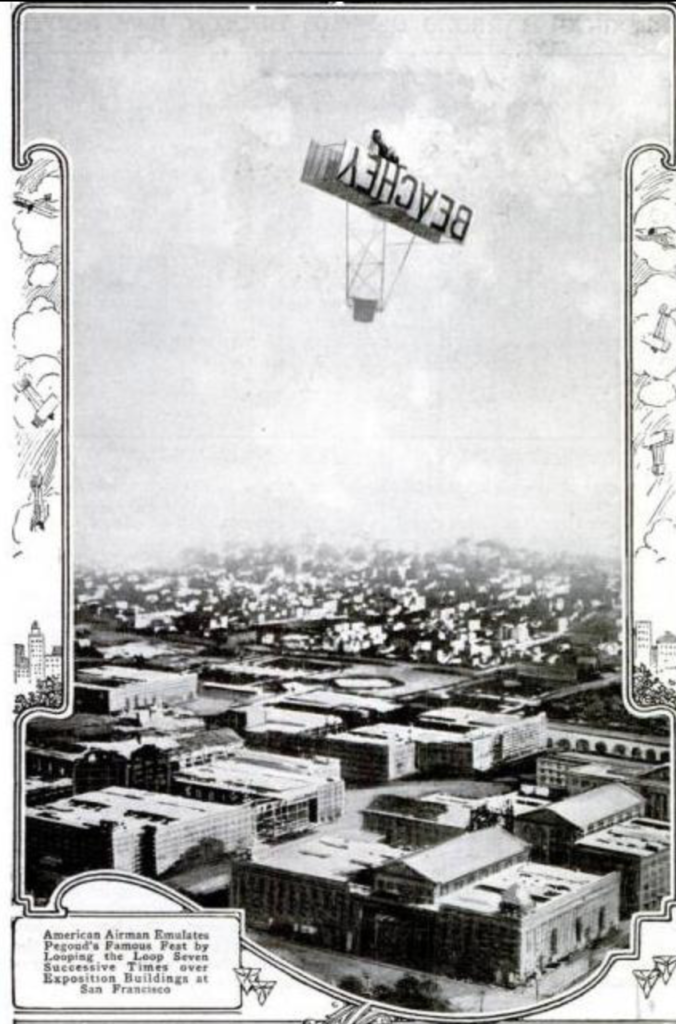
Lincoln Beachey flying over the PPIE
Aviator, stunt pilot, and native San Franciscan, Lincoln Beachey had been a main attraction of the fair, however, he was tragically killed performing at the fair.
From Disciples of Flight.com:
“On March 1915, a crowd of 50,000 gathered in the fairgrounds to watch Lincoln J. Beachey’s spectacular flying stunts, with another 200,000 spectators packed into the surrounding hills for a free viewing. This event would unveil Lincoln’s latest and most powerful plane yet, the Beachey-Eaton Monoplane, capable of flying at over 100 mph. The event began successfully, with Lincoln guiding the monoplane high over Alcatraz Island and the San Francisco bay, completing a loop the loop or two to get the crowd going.
Amongst the deafening cheers of the onlookers, Lincoln turned the plane onto its back in possible preparation for an inverse loop, just 3,000’ over the water. The plane began to sink in the air, and Lincoln attempted to salvage the situation by turning the plane 180 degrees onto its belly, but the strain of the maneuver cracked the rear spars, and the force of the air against the wing of the monoplane cracked it down the middle with a bone-rattling sound, allowing the wind to rip the wings completely from the body of the plane.
Now, locked in a nose-dive from which he could not escape, Lincoln and his mangled monoplane crashed against the surface of the bay, quickly sinking into the freezing water.
It would take rescuers nearly two hours to find the body of Lincoln, still strapped tightly to his monoplane, which was discovered close to the shore of the bay near Fillmore Hill, bringing him back to where his fatal love of flying began.”
Lincoln Beachey had a fascinating career, which has been documented very thoroughly at DisciplesofFlight.com
After Beachey’s death the organizers of the Exposition weren’t sure if this type of entertainment should continue. Then Art Smith strapped fireworks to the back of his bi-plane and took off at night for the first of a series of spectacular performances defined by his aeronautical prowess in his execution of looping-the-loop, rolling over sideways, and a startling series of spins, drops, and dips.
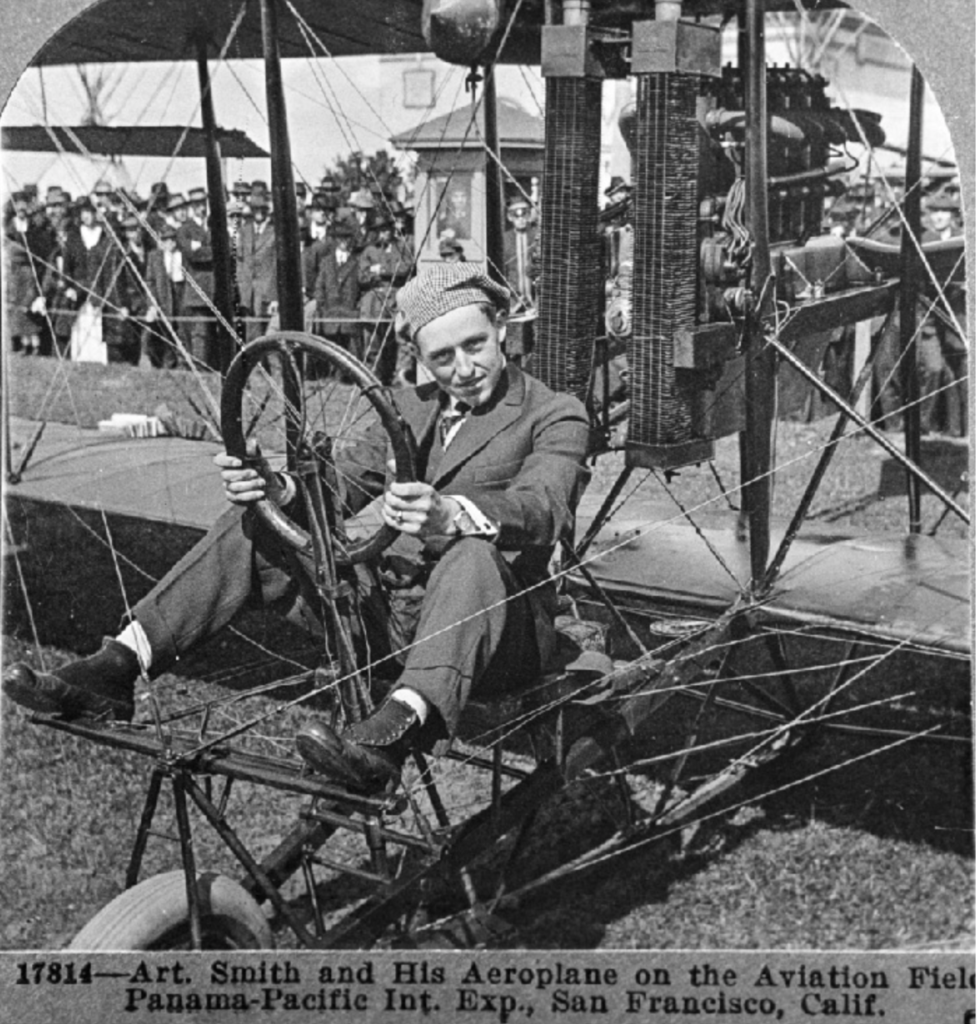
From September 9, 1920 through 1944, Marina Green served as Montgomery Airfield named in honor of pioneer aviator and native Californian, John J. Montgomery and also as Marina Airfield when it was the first terminus of the United States Post Office celebrated in the plaque found on the green.
The field was one half mile west of Fort Mason along the edge of the bay. Its was unpaved and ran 1500′ east/west by 500′ north/ south and had gas and oil available on the field.
A September 11, 1920 article in the New York Times stated: “Carrying 700 pounds of mail,the first transcontinental postal airplane to leave San Francisco cleared from the Marina Field at 6:15 A.M.
Raymond Little was the pilot.”
This site was abandoned within 2 years and mail service was moved a short distance away to Crissy Field.
On the other side of the pedestal can be found this plaque

“At this site on 8/30/44, Stanley Hiller Jr., pioneer helicopter designer, made the first sustained & successful public flight of a helicopter in the western United States. His single-place rotorcraft, the XH-44, was the first helicopter designed & built in the west, and America’s first successful co-axial helicopter. Presented by San Francisco International Airport Flight Festival Committee, August 1954.”
The Marina Green served as the location for the first flights of the Hiller XH-44 helicopter, the first coaxial helicopter to fly in America, an aircraft currently in the collection of the Smithsonian Institution. The first actual trial of the Hiller was in Memorial Stadium in Berkeley, California, just across the Bay.
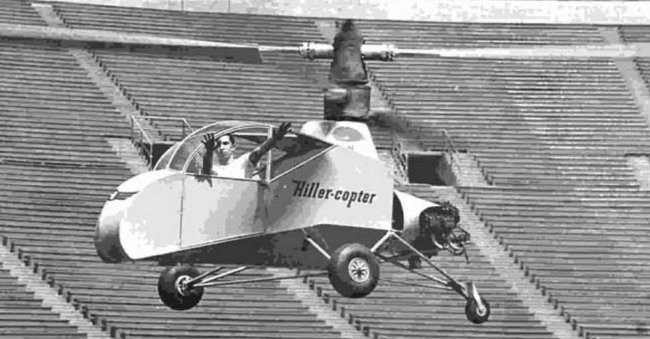
The Hiller-Copter being tried out by its owner and another San Francisco native, Stanley Hiller Jr.
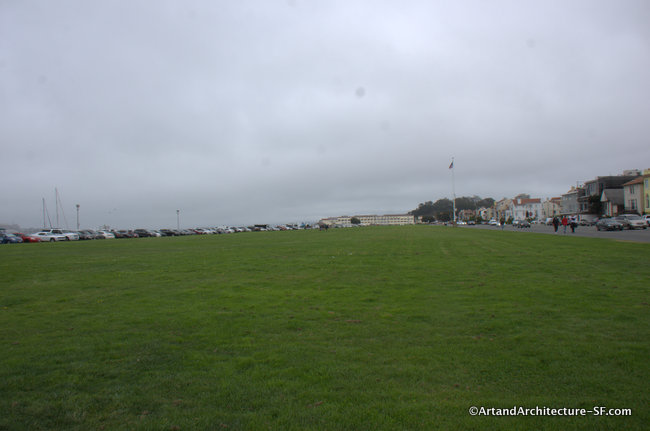
The plaques are on the flagpool pedestal that can be seen in the distance on the right at approximately 435 Marina Boulevard.
